Intel QuickAssist is a suite of technologies that primarily accelerate crypto and compression tasks in systems. One way to get QAT is built-into chips. Examples include Rangeley, Denverton, and Ice Lake-D, which all have built-in QAT. Another way has historically been to have an Intel PCH capable of QAT acceleration. For many systems, the key has been utilizing effectively PCH’s on PCIe cards as standalone PCIe accelerators. Finding information on those PCIe QAT adapters seems harder to find than it should. As a result, we are creating a little guide to help people understand the generations of QAT technology.
Intel QuickAssist Gen 0
The Gen 0 QAT was announced in 2007 by now CEO Pat Gelsinger in his “Tolapai” product. We have not been able to find any PCIe cards that are based on this technology generation (the Intel EP80579.) Then again, it was a very new concept for Intel at the time and was a first-generation technology.
The observation at the time was that encryption and other workloads would be more efficient on accelerators than on general-purpose cores. At the time, HTTPS was not even a ubiquitous web technology.
Reader note: There was an older Intel IXP2xxx generation such as the Intel IXP2350 that we can find snippets of information on, but this was the first attempt (pre-Tolapai) that was perhaps the ancestor of what has now become QuickAssist. Thank you for the tip!
Intel QuickAssist Gen 1
The codenames for this generation of cards were Granite Hill (8920) and Walnut Hill (8950.) Walnut Hill seems to be the one that there is the most information on, and that part integrates a Coleto Creek chip onto a PCIe card.
- Intel 8920 IQA89201G2P5 (up to 20Gbps)
- Intel 8950 IQA89501G1P5 (up to 50Gbps)
- Silicom P22ISCO2
- Netgate CPIC 8955
The Intel 8920 utilized the Intel Communications Chipset 8920, while the Intel 8950 utilized the Intel Communications Chipset 8955.
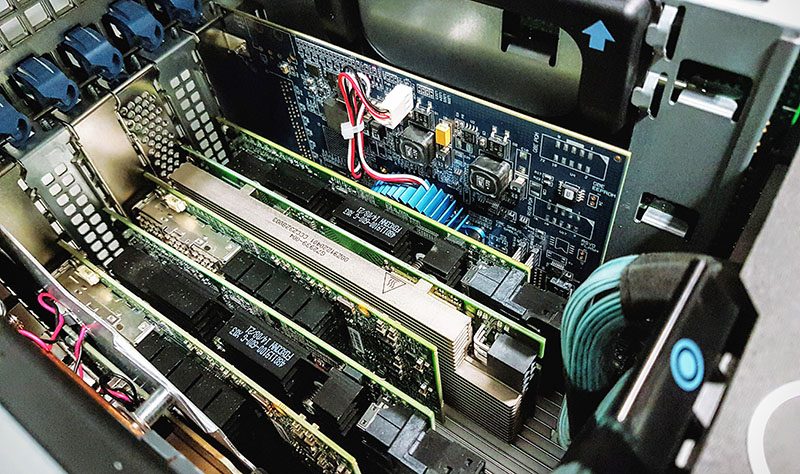
One would find this generation in the Rangeley (Atom C2000), Cave Creek, and Coleto Creek platforms. We think of this as more of the Xeon E5 generation technology, although Broadwell-DE (Xeon D-1500) was a Gen2 part.
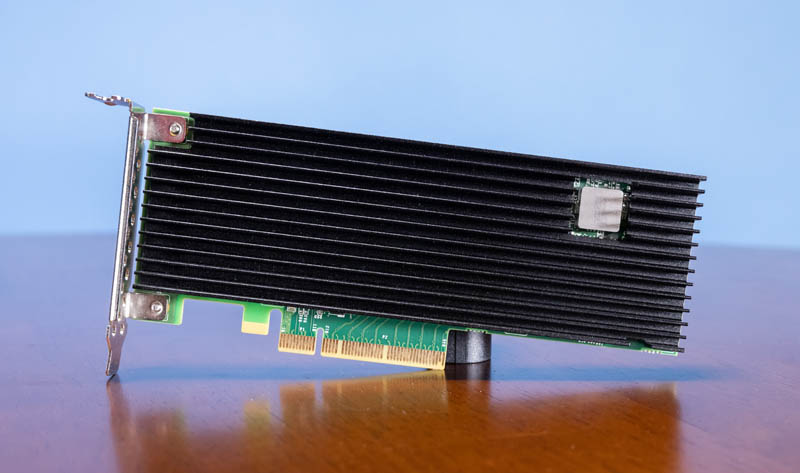
There also a number of third-party cards.
Intel QuickAssist Gen 2
Lewisburg PCH on a PCIe card. This series was focused on enabling the 10GbE/ 40GbE generations of servers, storage, and networking boxes initially, then increased to the 100GbE generation as time moved on. The adapters we found that are part of the Lewis Hill QAT lines are:
- Intel 8960 IQA89601G1P5, IQA89601G2P5, IQA89601G3P5 (up to 50Gbps)
- Intel 8970 IQA89701G1P5, IQA89701G2P5, IQA89701G3P5 (up to 100Gbps)
- Silicom M20E3ISLB is Intel QuickAssist PCH for a 2.5in U.2 Drive Tray
- Silicom PE3ISLBTL
- Cisco UCSC-P-IQAT8970
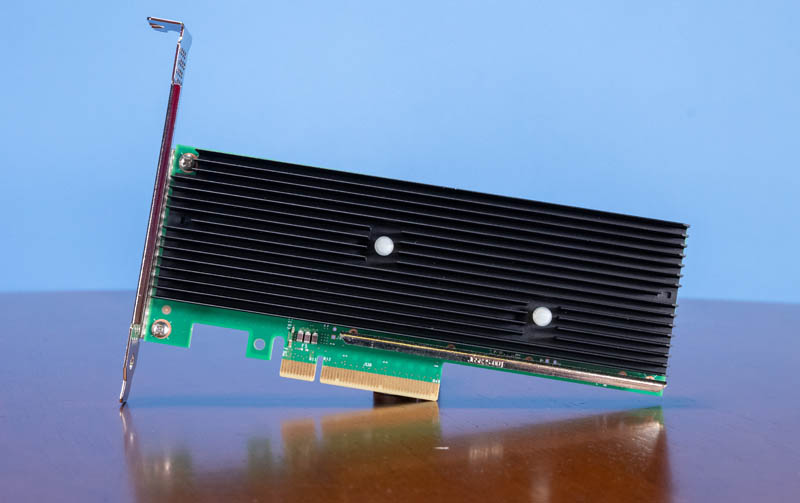
One can commonly find these in Broadwell-DE (Xeon D-1500 series), Hewitt Lake (Xeon D-1600 series), Skylake-D (Xeon D-2100 series), and Denverton (Atom C3000 series) parts.
Intel QuickAssist Gen 3
This is the current generation that focused on 25GbE, 50GbE, and 100GbE acceleration.
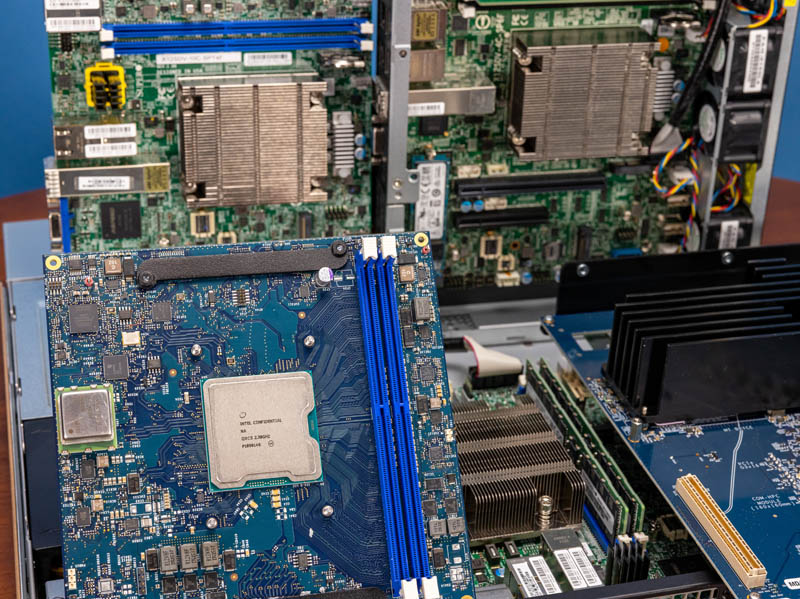
QAT Gen3 is found in Ice Lake-D/ Snow Ridge/ Parker Ridge chips. We are looking for others.
Intel QuickAssist Gen 4+
We know that current generation QAT solutions are not fast enough for next-generation Xeons nor adapters like the Google-Intel Mt. Evans IPU DPU. Intel has said Mt. Evans has QAT-based crypto and compression capabilities, but it has not said that it is a QAT accelerator. Still, Intel must have something coming for the 200Gbps and 400Gbps generations as we know it will continue, yet those products have not been formally announced.
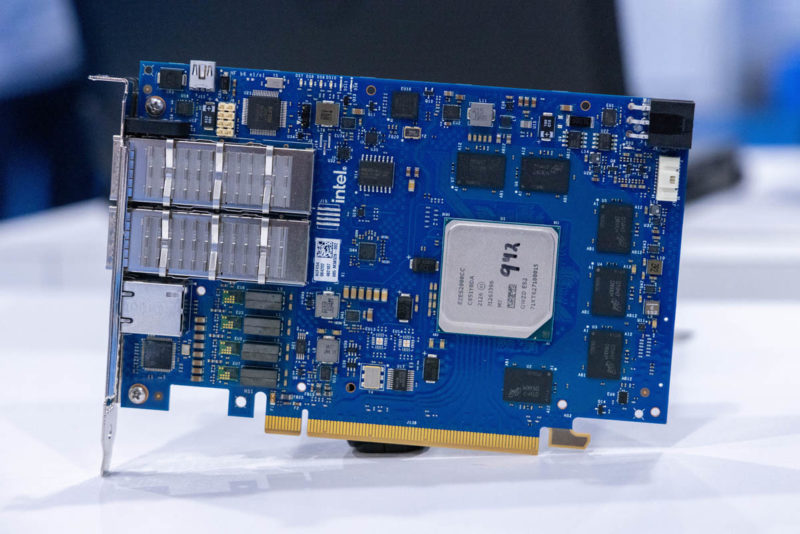
We will update this as it becomes available.
Intel QuickAssist Engine / QAT Engine
We are going to make a special note here. Sometimes when Intel discusses QuickAssist it actually is talking about the “QuickAssist Engine.” Intel has software that can utilize either the extensions built into 3rd Generation Intel Xeon Scalable (Ice Lake) CPUs or QAT hardware acceleration. There is actually a large benefit from using the software QAT Engine with Ice Lake generation processors even without the hardware accelerators.
Final Words
If you find new adapters, feel free to list the model number and generation in the forums. We can add them to this list. We are just creating this as a reference piece so that folks have some way to evaluate which card belongs to a given generation. Each generation brings new features like new ciphers that are accelerated. As a result, you generally want the newest generation. Still, it can be confusing to navigate, so we are at least starting this guide.
We will also have a few QAT pieces to help show why and how this is being used in the industry. Stay tuned for those.
In the meantime, if you see other cards or parts, feel free to drop them in the comments or in the forums in this thread.

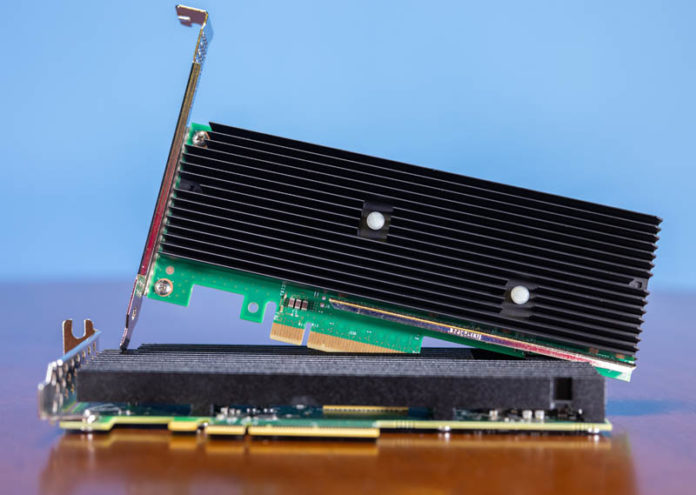



Cheaper & more flexible would be just to have I/O on the card with PCIe5/6 and add a few more cores to the main CPU to handle all needed work in software
Jay – hold that thought for a few days, until after Hot Chips. We have a QAT video showing the performance deltas.
Probably for a forum thread, but is it possible to use QAT outside of networking? As for application layer acceleration of encryption? I have use cases for high volume encryption but as these cards are normally utilised in networking I wasn’t sure if they had use outside that?
Bob H – yes. They can be used for other uses plus even just compression.
Bob – I would assume it would be perfect e.g. for ZFS, i.e. both for the compression and also if you encrypt your datasets. But I have no idea if current ZFS implementations are using QAT if available.
A bit curious and confused. So your recent bit on the Netgate 4100 got me digging into this tech. A card like the Intel QuickAssist Adapter 8960 QAT Card it says is the tech in the C3000 series Atom cpus. So what is the ability difference between the two? I mean the C3338r is $37 and that card is $500+ so is it several magnitudes faster than the cpu or is it just because of its unique ability to add this feature to systems lacking it?
There is a significant difference between both QAT accelerators. 8960 is supporting more algorithms and can handle much more bandwidth than this inside C3000. And another point of view, placing that accelerator inside SoC is much cheaper than the whole PCI card because it needs many other components to work.
What is the significance of the G1 G2 and G3 in the part number
e.g. IQA89701G3P5 ?
STH Team,
Do you have any guide or article (those set of instructions/command that you’ve used in test setups) about setting up the QAT Engine in popular distributions?
Have found several Intel PDFs and GitHub repo. Wasn’t able to fully follow it and make it work on Ubuntu 22. So, it’s still an adventure for me
This article could use an update regarding how QAT Gen 4 is available on 4th Gen or newer Intel Xeon Scalable Processors that include dedicated Intel QAT hardware, which may require an Intel On Demand upgrade to unlock.